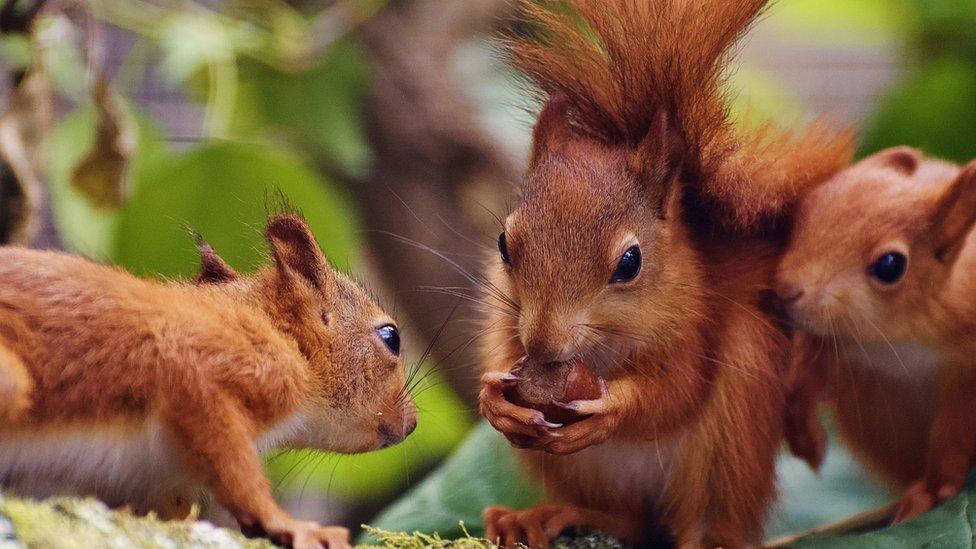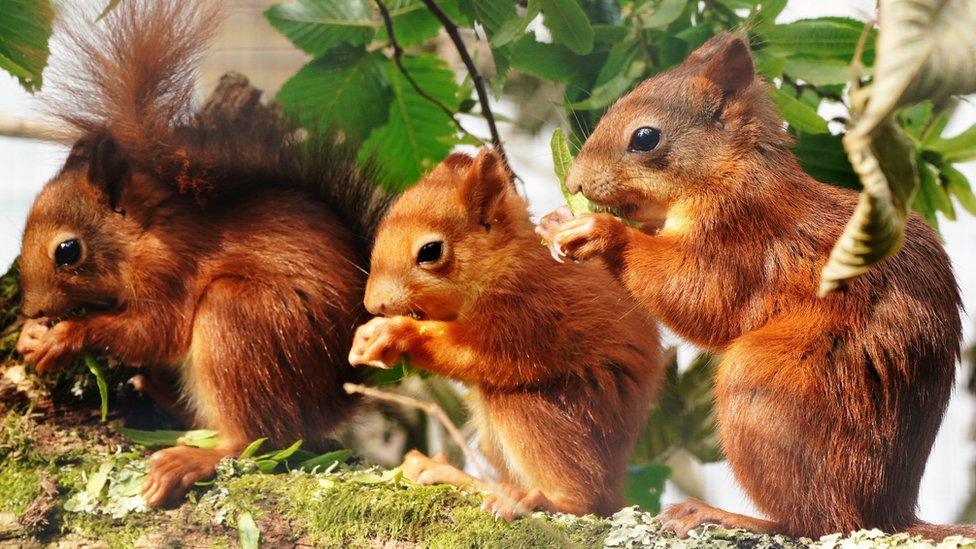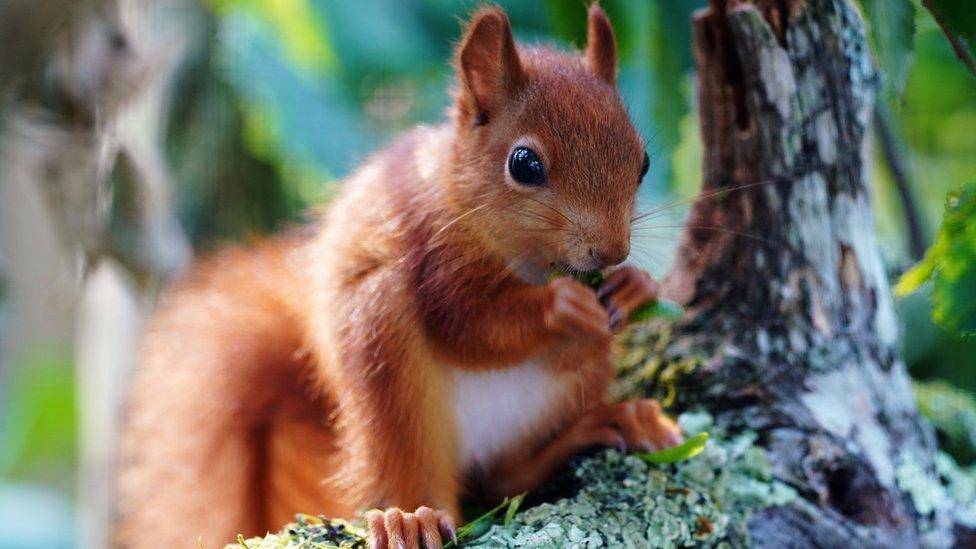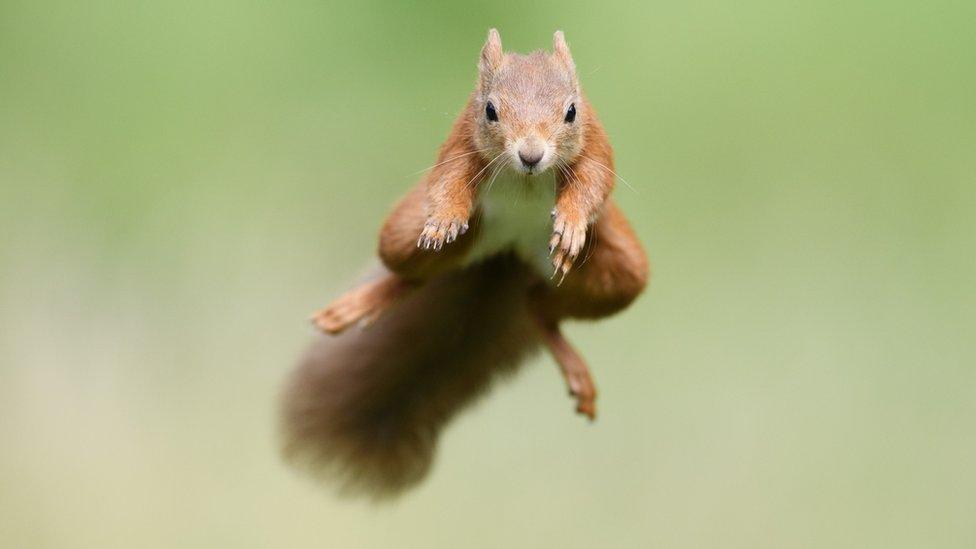Check out these cute red squirrels born at Longleat!
- Published
- comments

Meet the first red squirrels to ever have been born at Longleat Safari Park in Wiltshire.
The group of four babies, also known as kits, are part of a UK-wide breeding programme which aims to reintroduce the species back into the wild.
The boy and three girls, were born in a type of nest known as a drey, which is roughly the size of a football and made up of twigs and small branches with leaves, moss and grass lining the inside.
Like other mammals they were born blind, deaf and hairless and were totally dependent on their mother for the first 10 weeks of their lives.
Red squirrels are a native mammal in the UK but are rare! The last red squirrel sighting in Wiltshire was in 1965.
They're now almost extinct in England, except for isolated populations on the Isle of Wight, Brownsea Island, Formby, the Lake District and parts of Northumberland.

The red squirrel was the inspiration for Beatrix Potter's famous 'Squirrel Nutkin'.
It was one of the first species identified as needing urgent action as a UK Biodiversity Action Plan priority terrestrial mammal species.
What happened to red squirrels?
Red squirrels were widespread across most of the UK until the 1940's, but have undergone one of the most drastic declines of all UK mammals,
This has come about largely as a result of the introduction of the North American grey squirrel in the late 19th and early 20th century.

The larger greys are more able to compete for food and shelter than the native reds. Grey squirrels also carry the squirrelpox virus, which can kill red squirrels.
Today there are an estimated 140,000 red squirrels compared to the 2.5 million grey squirrels.
Keeper Chris Burr said the team were very excited to announce the birth.
(Video from 2018) Find out which other animals are helping the red squirrel
He added: "Our role is to establish a healthy breeding population and, once fully grown, these kits will become part of future breeding programmes or perhaps even wild release themselves.
"Obviously our ultimate goal would be to have a population living on the Longleat estate and the aim is for us to have the native red squirrels back on site within the next 10 years."
- Published6 August 2021

- Published7 July 2020

- Published2 January 2018

